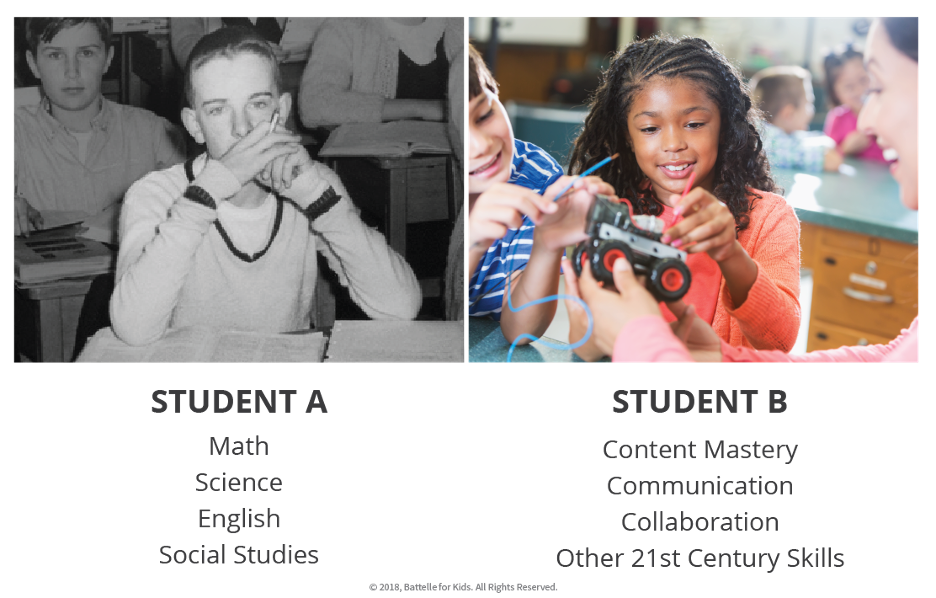
For nearly a decade, gaming has been touted as one of the next big trends in educational technology. At first, many dismissed the use of computer games as learning tools, but now both educational leaders and gaming companies are starting to take the idea seriously.
In June, when the U.S. Department of Education’s Institute of Education Science awarded funding to ed-tech startups under its 2012 Small Business Innovation Research Program, eight of 11 contracts went to gaming projects. K-12 education experts predict widespread adoption of educational gaming within the next three years, according to a report from the New Media Consortium. And GSV Advisors estimates that U.S. education gaming expenditures will increase 30 percent by 2017, while total educational expenditures will increase only 7 percent. Even the White House is buying into the benefits of gaming, having appointed a special Senior Policy Analyst in the Office of Science and Technology Policy to advise on the impact of video games on learning.
Educational computer games are nothing new. When I was a middle school student in the early 2000s, I played hours of Oregon Trail and Treasure Mountain in computer class, just like years earlier I was glued to Reader Rabbit on our black-and-white home computer. But, Arizona State University Professor James Gee says such games are mere “edutainment,” little more than memorization drills. Gee, who researches the learning principles of video games at the K-12 level, says today’s gaming proponents hope to leverage increasingly powerful technology and promote games that are more focused on problem solving and innovation. This kind of learning relies on the immersion in a virtual world that players of commercial games typically experience.
Some teachers are a step ahead of ed-tech companies, integrating commercial games into their lesson plans. After hearing feedback from teachers who have used the physics-based game Portal 2 in class, gaming developer Valve launched a Teach with Portals website this summer. The company also developed an educational Puzzle Maker to let students create their own interactive Portal 2 puzzles where problem solving requires physics know-how.
“Instead of just demonstrating concepts through the game, you can encourage students to design experiments and compare,” says Valve developer Yasser Malaika of the new puzzle-making component. “It really allows the game to kind of shine as a medium for learning in a way it didn’t before we had the puzzle option.”

Valve also introduced Steam for Schools, a limited version of the Portal platform that restricts student access. Since the beta version launched in June, more than 2,300 educators have signed up, says Leslie Redd, director of educational programs at Valve.
Several federal departments award grants to commercial technology startups under the Small Business Innovation Research program, with the Institute of Education Science choosing recipients in the ed-tech field. But they only started to see interest from gaming projects in the past few years, says Edward Metz, program officer for IES SBIR. After 2007, Metz started reaching out to game developers to let them know that the government might be able to provide them with funding and support.
“I thought that might be an untapped area, especially considering we are seeking to fund tech products that could be commercially viable,” he says. This year nearly 50 IES SBIR applicants had a gaming component, and during the past year about half a million students played games developed by recently funded projects. Some 150,000 users have tried out the life sciences games developed by Filament Games, a 2010 recipient of the IES SBIR award, including one that teaches photosynthesis by having students grow virtual sunflowers. Another recipient, the 3-C Institute, is developing Zoo U, a social development game that creates virtual environments for elementary school students to practice communication, cooperation, and help them develop empathy.
Naysayers argue that the educational potential of games is overstated. Some parents wonder whether the games teach or simply provide distraction. Others, like Slate contributor Lisa Guernsey, worry that children will become addicted. But Metz hopes the games in the IES portfolio will eventually contribute to research on the viability of classroom gaming. And there is little opposition from policymakers, says Gee, because games are a potential catalyst for much-needed innovation and complex thinking in the classroom.
Valve’s Malaika considers gaming a natural next step in the evolution of learning technologies. “Nobody would say that books or films are inherently good or bad as a medium,” he says. “Certain things are adapted for education or entertainment. We’re just going through that with games right now.”















